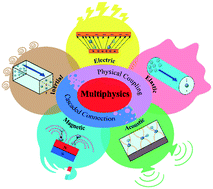Multiphysics microfluidics for cell manipulation and separation: a review
Abstract
Multiphysics microfluidics, which combines multiple functional physical processes in a microfluidics platform, is an emerging research area that has attracted increasing interest for diverse biomedical applications. Multiphysics microfluidics is expected to overcome the limitations of individual physical phenomena through combining their advantages. Furthermore, multiphysics microfluidics is superior for cell manipulation due to its high precision, better sensitivity, real-time tunability, and multi-target sorting capabilities. These exciting features motivate us to review this state-of-the-art field and reassess the feasibility of coupling multiple physical processes. To confine the scope of this paper, we mainly focus on five common forces in microfluidics: inertial lift, elastic, dielectrophoresis (DEP), magnetophoresis (MP), and acoustic forces. This review first explains the working mechanisms of single physical phenomena. Next, we classify multiphysics techniques in terms of cascaded connections and physical coupling, and we elaborate on combinations of designs and working mechanisms in systems reported in the literature to date. Finally, we discuss the possibility of combining multiple physical processes and associated design schemes and propose several promising future directions.



 Please wait while we load your content...
Please wait while we load your content...